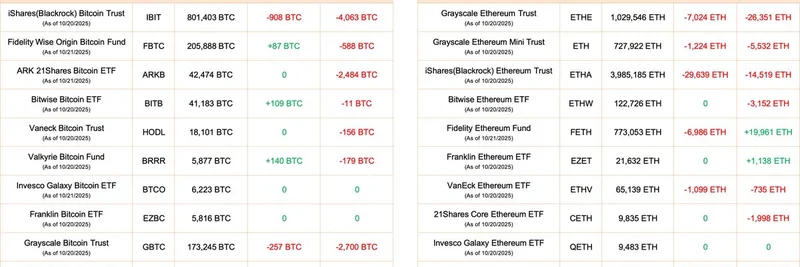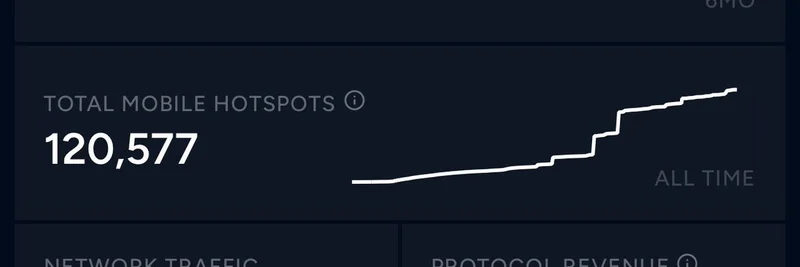If you're keeping tabs on the crypto world, you've probably noticed how exchange-traded funds (ETFs) for Bitcoin and Ethereum are becoming big players. These ETFs allow traditional investors to get exposure to crypto without directly holding the assets, kind of like buying shares in a fund that tracks gold prices. On October 21, 2025, data from on-chain analytics firm Lookonchain revealed some eye-opening net flows—or the difference between money coming in and going out—for these funds.
The update, shared via an X post, paints a picture of a red day for both Bitcoin and Ethereum ETFs. Overall, the 10 Bitcoin ETFs tracked saw a net outflow of 829 BTC, which translates to about $94.21 million based on current prices. That's money leaving the funds, potentially signaling caution among institutional investors.
BlackRock, a giant in the investment world, led the pack with its iShares Bitcoin Trust (IBIT) shedding 908 BTC—worth around $103.15 million. Despite this, BlackRock still holds a massive 801,403 BTC, valued at over $91 billion. Other notable moves include Fidelity's Wise Origin Bitcoin Fund (FBTC) adding 87 BTC but still ending with a net outflow over the week, and Grayscale's Bitcoin Trust (GBTC) losing 257 BTC on the day.
On the Ethereum side, things looked even tougher. The nine Ethereum ETFs reported a combined net outflow of 45,972 ETH, equaling roughly $187.84 million. Again, BlackRock's iShares Ethereum Trust (ETHA) was front and center, outflowing 29,639 ETH (about $121.11 million), though it maintains a hefty holding of 3,985,185 ETH worth $16.28 billion. Fidelity's Ethereum Fund (FETH) bucked the trend with inflows of 6,986 ETH, providing a bit of green in an otherwise red landscape.
What Do These Outflows Mean for Crypto?
Net outflows like these can stir up the market. When big institutions pull money out, it might reflect broader concerns—maybe economic jitters, regulatory whispers, or just profit-taking after a rally. For Bitcoin, which often sets the tone for the entire crypto space, this could pressure prices downward if the trend continues. Ethereum, with its smart contract capabilities powering everything from DeFi to NFTs, might feel the ripple effects too.
But let's tie this back to meme tokens, since that's our beat here at Meme Insider. Meme coins thrive on hype, community vibes, and often ride the waves of major cryptos like BTC and ETH. If ETF outflows signal cooling institutional interest, retail traders might get skittish, leading to volatility in meme token prices. On the flip side, savvy players could see this as a dip-buying opportunity, especially if on-chain data hints at a rebound.
Key Takeaways from the Data
- Bitcoin ETFs Total Holdings: 1,348,271 BTC (about $153.16 billion)
- Daily Net Inflow for BTC ETFs: -829 BTC (-$94.21 million)
- Weekly Net Inflow for BTC ETFs: -10,390 BTC (-$1.18 billion)
- Ethereum ETFs Total Holdings: 6,744,521 ETH (about $27.56 billion)
- Daily Net Inflow for ETH ETFs: -45,972 ETH (-$187.84 million)
- Weekly Net Inflow for ETH ETFs: -31,187 ETH (-$127.43 million)
Keep an eye on upcoming updates from sources like Lookonchain for more insights. If you're building your knowledge base on blockchain trends, understanding ETF flows is crucial—they're a bridge between traditional finance and crypto, influencing everything from blue-chip assets to the wild world of meme tokens.
For more on how these shifts might affect your favorite meme coins, check out our other articles on crypto market trends and stay tuned for daily breakdowns.



